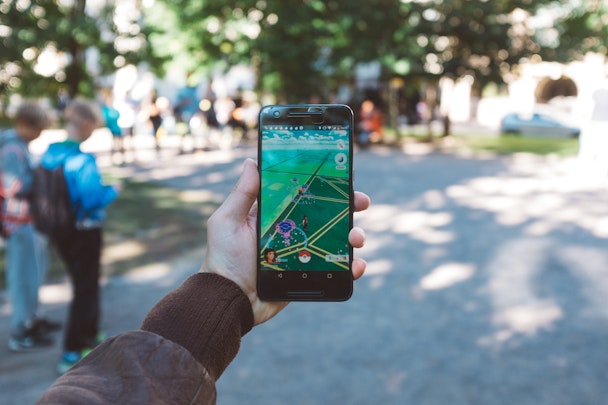A new reality for AR arrives as ads bring fresh rewards
Ads using smartphone tech to deliver augmented reality (AR) ads are on the rise. Software development company Niantic is one of the leading makers of those ads. Here, Adam Shlachter lays out the future of a burgeoning space.

/ David Grandmougin via Unsplash
Augmented reality (AR) has grown by leaps and bounds in recent years. As the technology and accessibility improved, so too has consumer interest. This has led to an increased focus by brands on using AR as part of their core marketing strategy, figuring out how they can deliver augmented marketing, across all of their plans.
A 2022 study by Meta’s Foresight Group found that “campaigns combining BAU ads and AR ads outperformed BAU campaigns alone in driving awareness, with the campaigns that incorporated AR ads delivering nearly triple the boost in brand lift”.
If brands are going to be successful in the era of mixed reality, they need to think about the impact of AR across the marketing funnel to capitalize on the rapid changes in consumer experiences.
Advertisement
Rewarded AR ads
Niantic recently launched rewarded AR ads, during the Cannes Lions festival. The new format works with smartphone cameras; players can enjoy interactive branded experiences that unlock rewards within games, such as Pokémon Go or Peridot. This is particularly effective in physical locations, where immersive brand experiences lead to superior results.
Rewarded AR ads deliver deeper consumer engagement for brands, driving stronger brand impact than static banners or video ads alone. In an early study, Niantic found that people prefer Rewarded AR ads, with roughly 80% of players indicating that AR ads are a good idea.
They’re also proving more cost-effective for brands. That same Meta Foresight Group study found that campaigns incorporating AR elements reduced costs for awareness by 59% in comparison to solely BAU ads.
By seamlessly incorporating AR ads into popular games such as Pokémon Go, brands can be exposed to tens of millions of players. The opportunity is an accessible alternative to other advertising formats - with the potential to be adapted to other games such as the Tamagotchi-style game Peridot.
Advertisement
Global reach
With nearly 7 billion smartphone users – over 85% of the global population – web-based AR (WebAR) ads and experiences can reach far wider audiences today than headsets alone. And with no app required, they are also a far more accessible solution.
AR ads also strengthen the impact that a brand can have on consumers. They harness immersive storytelling to promote products, and enable consumers to feel closer to the brand, building a more unique and personal relationship.
Niantic has streamlined the AR ad development process, creating strong partnerships with key development agencies that manage creative production processes, which takes the pressure off brands to produce interactive elements.
Suggested newsletters for you
Coffee break
Circle K is a great example of a brand that has seen great success after piloting Niantic’s Rewarded AR ads. Its goal was to increase brand awareness and product sales for its new coffee offering, which it achieved by presenting Pokémon GO players with an ad featuring a floating balloon in-game.
By tapping on the ad and opening the mobile camera, players were able to interact with a 3D Circle K coffee cup they placed in the space in front of them. Following the interaction, players received prompts to buy a physical cup of coffee at their closest Circle K store. The Rewarded AR ad campaign resulted in an average engagement rate of 76% and an average completion rate of 95% for the experience.
Future opportunities
This is a new opportunity, still in its infancy. But consumers are now expecting more from brands. AR is the vehicle to transport audiences to worlds never seen before, adding an exciting element of surprise and delight. It can deliver moments that convert a potential consumer into an active one.
The future of AR advertising is bright. I expect more brands to begin integrating the technology into traditional advertising strategies in the coming months. Research shows that this new form of advertising is already more effective at engaging consumers than traditional ad formats. It’s time for all marketers to reevaluate existing strategies and look to burgeoning technology to engage a new generation of customers.
Content by The Drum Network member:

Niantic
Niantic builds augmented reality technology that powers the real-world metaverse. Its Lightship platform is the world’s first scaled AR platform, enabling developers...
Find out more
